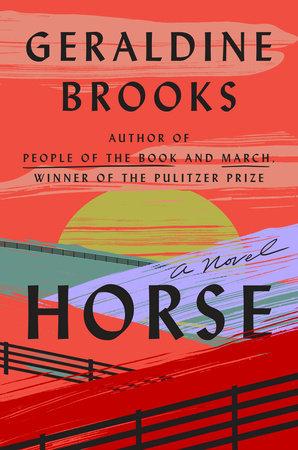
Book Review: ‘Horse’ – a Fictional Journey of Race Legend, “Lexington”
Horse melds 19th Century racing, slavery, equine art history and modern forensics with a dash of romance. By Geraldine Brooks.

“Lexington” lights the imagination of American horse racing devotees. Geraldine Brooks strings together “Lexington,” 19th Century racing, slavery, equine art history and modern forensics with a dash of romance in her historic novel, Horse. Horse and human as property is a vein through the novel. A tall order. Ms. Brooks’ drive for detail makes for educational reading.
Ms. Brooks shared thoughts and motivations with me on the engine that drove her to pen Horse.
What is your Interest in racing? “I’m not interested in racing (per se). My concern is for the treatment of horses on and off track. Racing is dangerous for horses. My interest is in ‘Lexington,’ the legendary horse. ‘Lexington’ was well treated.
Horse melds “Lexington” with 19th century racing practices and the racial divide in America. Thoughts on current racing and use of workers today? “My interest is in the 19-century racing. The races were longer. More about stamina and tactics. Horses weren’t raced until the age of three or four when the bones are more fully formed.”
What drove you to pair horse racing with slavery? Did working with the horses raise the standing of the slaves who cared for them? “Slave labor was employed. The work was (is) built on skill. Work with the racehorses was a small step to the possibility of advancing their lives. The slaves’ skills in racing were valued.”
Thoughts on contemporary caretakers in horse racing. “Improve the lives of caretakers. Those who care for the horses have hard work. They are the least protected people (in racing). So much money is sloshing around the racing Industry, they could take better care of the people and the horses when the racing life stops.”
Horse links contemporary science, a Sherlock Holmesian investigation of equine art history and American racial past that reflects current issues. Why did you mix in a contemporary character who played polo in his past? “I just wanted to talk about polo. In Australia, it is a weekend pastime for farmers who ride their horses for work. The occurrences recounted by Theo as a Black player happened.”
I read you are a “mature” rider who started riding in her 50s. How do horses fit into your current life? What are the goals for your lessons? “I don’t take lessons now. I’m happy riding the beautiful trails where I live in Massachusetts. I don’t bounce anymore, so I stay away from (more risky riding).”
You own a horse? “My 25-year-old mare, Valentine. My focus is to be with horses rather than on them.” (See article in Oprah Daily.)

Geraldine and Valentin. Photo courtesy of Randi Baird.
Horse is a multifaceted creation of horse, human and sport. Much to be learned and thoughts to be provoked in Horse.
P.S. Etymological freebees: ziggurat is a stepped or tiered, tower structure (from Mesopotamia) and pannier is a saddle bag (Middle English from old French). Any others — you are on your own.
“Lexington,” aka “Darley, can be researched on the following sites : Lexington: Great Racehorse, Outstanding Sire | America’s Best Racing (americasbestracing.net), Lexington Racehorse | Smithsonian Institution (si.edu),





